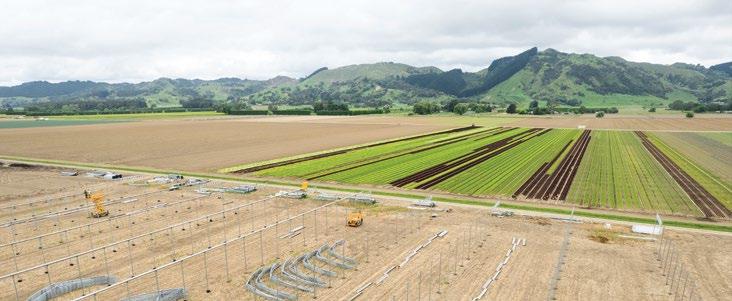
6 minute read
Weather bomb highlights the need to focus on future of farming
WEATHER BOMB HIGHLIGHTS THE
NEED TO FOCUS ON FUTURE OF FARMING
Words by Kristine Walsh
Steel framing for LeaderBrand‘s new greenhouse has arrived and the first poles have been installed
Increasing competitiveness in the domestic market and the goal of reducing environmental footprints will be key for farming in the future, says LeaderBrand chief executive Richard Burke.
So too will be the need to adapt and innovate as climate change impacts the way we farm. This reality was reinforced in the first week of November, when the heavens opened. MetService recorded 174 millimetres of rain, nearly three times the average for November, at its Gisborne Airport site in the 36 hours leading up to 4pm on 4 November. A state of emergency was declared and paddocks around the region were flooded. As the mop up began, Richard said damage from the storm would have short-term impacts on LeaderBrand‘s spinach and rocket crops and could lead to supply gaps for corn early in the New Year. “It was not the worst storm we’ve seen but weather events like that are becoming more frequent as the country’s climate continues to be impacted,” Richard says. “Monitoring weather is a daily practice for us and we’re continuously looking to mitigate negative impacts where possible. We’re also extremely lucky to be able to distribute our crop supply across our multiple farms growing across the country.” As well as growing 300 hectares of Pinot Gris, Chardonnay and Gewürztraminer grapes, LeaderBrand is the largest broccoli grower in New Zealand; is a big exporter of squash and processed sweetcorn; grows tomatoes for processing; and supplies about a third of the country‘s bagged salad products. The company employs around 450 permanent staff, plus an extra 150 seasonal workers during the harvest. With farms in the South Island, Matamata and Pukekohe, LeaderBrand was able to increase production at its other farms to secure supplies of spinach, broccoli and lettuce in the weeks after the storm.
However, had there not been pandemic-related delays to the construction of its massive greenhouse development at Makauri, the weather bomb would have been easier to manage. “We know agricultural practices are going to have to adapt to the country’s increasingly variable climate and we hope our new greenhouse will ensure that big weather events of the future won’t be as destructive as this was,” Richard says. “If we’d had the greenhouse built already, that shelter would have saved everything under cover, and we wouldn’t have lost as many crops as we did. “It will be a massive change to the way we farm but we think that this style of farming will be the way of the future. Adapting and changing is our only way forward to ensure

LeaderBrand chief executive, Richard Burke, on-site at the 40 million-litre water dam that will be filled with rain from the cropping house
we can continue to provide fresh produce all year round, while mitigating the environmental impact of all that water and soil running out to sea.” Richard says as well as addressing issues around climate and the environment, the greenhouse development will help LeaderBrand remain a competitive supplier to the domestic market.
Though the company has a summer production of up to 90,000 bags of salad a day – around 30% of New Zealand‘s bagged salads – interruptions to supply could turn consumers off (or to another product) so shoring up consistent, year-round supply is important.
“In addition, Gisborne has seen the influx of a lot of growers targeting the export market so competition for land, for people and for water is really high,” says Richard. “That‘s the space we are operating in as we try to cater for the domestic market and it‘s not getting any easier.” With around 3,000ha under cultivation at its various farms, the covered facility will be just a small part of LeaderBrand‘s operation, but a big part of the company’s future. The project got the go-ahead in October 2019, when Kānoa – Regional Economic Development and Investment Unit confirmed the company had secured a $15 million loan to part-fund the construction of its planned 11-hectare undercover growing facility. The first Covid-19 lockdown in March 2020 impacted construction, as did subsequent lockdowns, international shipping delays and border restrictions. Fast-forward to December 2021 and on-site work on the infrastructure is now complete; the steel framing has arrived from France; and the first poles have been installed and are stretching towards the sky. “We had planned to be operational by this time, but no one had anticipated a global pandemic, borders closed and shipping impacted,” Richard says. “As it stands, we aim to complete the build by June 2022, with a view to harvesting our first undercover crop ten weeks after completion.”
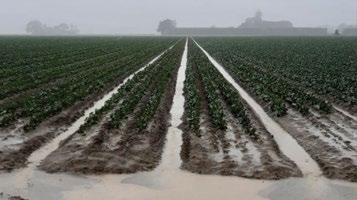
MetService recorded 174mm of rain in Gisborne in the 36 hours leading up to 4pm, 4 November
Stage one of the project consists of one, giant 11-hectare greenhouse that will be serviced by the already-installed one-million-litre treated water tank and 40-million-litre dam, fed by catchment from the greenhouse roof. That will make the facility self-sufficient for water, while the controlled environment will make for more accurate nutrient management. In many ways, it will operate just like a traditional farm, with seed planted directly into the soil and tractors trundling about under the six-metre-high structure. “But in reality, the project will revolutionise the way we farm in the future, accelerating year-round crop growth in a more sustainable manner; helping mitigate weather impacts; and creating more consistent product that will secure more jobs across the year,” Richard says. “And we‘ll continuously be looking at ways we can make it even better, such as through the use of electric vehicles.” However, there is still much to be learned before they move towards completion of a total 15ha of covered cropping. “Those first 11 hectares will need to prove their worth as, while there are examples overseas, an operation of this scale has not been done in New Zealand,” says Richard.
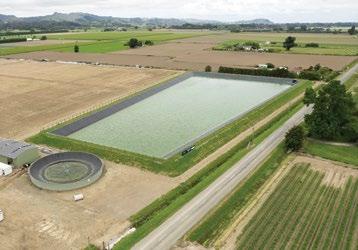
A 40-million-litre dam and one-million-litre watertank will service the new greenhouse
A big unknown for LeaderBrand will be crop rotation. Will they get four crop rotations in a year? Seven? Overseas examples have achieved up to nine, but they won‘t know until they do it. “The opportunity here is tremendous, so our focus is firmly on nailing down what will work,” says Richard. “For us, this is a learning period that gives us a good look at what the future of farming could look like.”
Greenhouses
“built stronger to last longer”
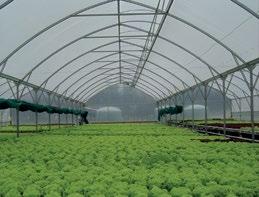

VEGETABLE PRODUCTION PROPAGATION
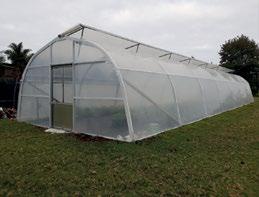
FLAT ROOF SHADE HOUSES
Redpath Greenhouses and Shadehouses, Manufacturing and suppling the industry for over 35years. Designs to suit your business and growing needs from the very large to very small. Designed, Manufactured, Delivered and installed on your site. Council plans and application work included. All buildings provided with manufacturer’s warranty and our construction crews are based nationwide for efficient and speedy assembly and after-sales service. Check out our website below for the full range of buildings, greenhouse films and fabrics.









